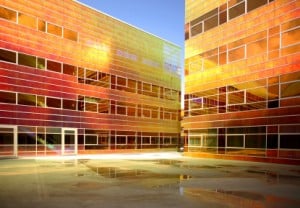 The million dollar question in commercial real estate: Will rental rates for office properties soften in the near future? Taking a quick glance at the past several years of San Diego County’s office market illustrates that years 2000 and 2005 were at all time highs for space demand. Basic economics, supply and demand, were the main reasons why rental rates soared north and vacancy rates headed south. During 2006 and 2007 space demand in the county has been fair, some submarkets better than others, but the real reason why rental rates have hit new thresholds is due to the ferocious appetite from investors chasing commercial property. Many commercial buildings have been sold at least three times over the past two to three years with hopes from each new incoming owner to push rental rates up, increase the income stream, and sell it to the next guy for a higher price. The Big Flip theory.
The million dollar question in commercial real estate: Will rental rates for office properties soften in the near future? Taking a quick glance at the past several years of San Diego County’s office market illustrates that years 2000 and 2005 were at all time highs for space demand. Basic economics, supply and demand, were the main reasons why rental rates soared north and vacancy rates headed south. During 2006 and 2007 space demand in the county has been fair, some submarkets better than others, but the real reason why rental rates have hit new thresholds is due to the ferocious appetite from investors chasing commercial property. Many commercial buildings have been sold at least three times over the past two to three years with hopes from each new incoming owner to push rental rates up, increase the income stream, and sell it to the next guy for a higher price. The Big Flip theory.
The commercial real estate leasing market crash that occurred in San Diego County during 2002 through 2004 does not appear to repeat itself anytime soon. However, it does seem hopeful that tenants may have reason to believe softening rental rates are imminent in certain areas of the county over the next 18 months. The following three factors should be taken into consideration before waiting for rates to plummet:
1. Vacancy Rates
Vacancy rates are slowly increasing. During 2005 through Q1 2006, demand for space picked up as tenants once again committed to occupying additional space. Toward Q4 2006, office vacancy rates for most parts of central and northern San Diego county dropped to a combined average of about 9% as compared to the current quarter of 2007 which indicates a vacancy rate of 14%, or 8,000,000 available square feet. Decent amounts of new product were developed over the past year adding to the supply, but also additional sublease space has been a large contributor. Sublease vacancy competes with direct vacancy from building owners because tenants who desire to shed their currently leased real estate typically are in loss mitigation mode and offer huge discounts. An abundance of sublease space eventually forces landlord’s rental rates to be much more competitive. Over the next year expect vacancy rates to climb a combined two to three percentage points, which will increase competition in the market and the concessions granted to tenants hunting for new space. (Resource-CoStar)
2. Lease Expirations
During calendar year 2008 and early 2009 real estate lease expirations will be about 50% of those anticipated in 2010. The reason: The last big boom was during 2005 through Q1 2006 when most tenants signed up to a five year term as in any hot market; therefore, pushing the next big block of expirations out to 2010. Lease expirations are one of the main sources that drives market activity. When a tenant’s lease is expiring within a 12-18 month window they start to strategize and shop for options, even if they want to renew the lease. Bottom line, tenants are forced to do something about their real estate. Tenants who do not have an immediate space need or suffer from the negative impact that occupancy costs have on their bottom line are prone to sit tight until the lease is nearing expiration. When lease expirations are scarce, market activity slumps, and landlords become desperate to fill the holes.
3. Investment Markets
What does any savvy real estate investor do the second they close escrow on their new asset? Raise rental rates. This has been a huge topic over the past couple of years as San Diego County’s commercial real estate has been selling at all time highs. A new ownership who pays top dollar for an investment property pushes these costs down to the end consumer by immediately raising rental rates hoping to boost the value of the property. At some point, this will cool off. Common sense underwriting criteria to acquire commercial property has been tossed out the window. Rental rates are not increasing by leaps and bounds due to supply and demand, it is mostly due from investors overpaying for real property.
Projects in Midwestern cities owned by smaller investors have watched prices hit thresholds and capitalization rates increase compared with properties in New York, Washington and San Francisco. (Dan Fasulo, managing director of Real Capital Analytics.) Even in San Diego, small to mid level real estate investors are much more cautious when acquiring new properties. In fact, a fair amount of local San Diego investors are placing a hold on purchasing new investments or value added real estate opportunities. At some point, this will trickle down to the institutional markets where it’s mainly other people’s money driving prices to all time highs.
While we may not see a drastic reduction in rental rates for commercial office space in San Diego anytime soon, expect some softening over the next 18 months in certain submarkets of the county. This is a result of increasing vacancy rates, lack of market activity due to scarce lease expirations, and slowing in the investment markets. Tenants who are shopping for new space, renewing their lease, or paying above market rates during the middle of their lease term within the next couple of years should find more opportunities to extract additional economic incentives from local landlords.
Scot Ginsburg is an executive vice president of Hughes Marino, a global corporate real estate advisory firm that exclusively represents tenants and buyers. Contact Scot at 1-844-662-6635 or scot.ginsburg@hughesmarino.com to learn more.








